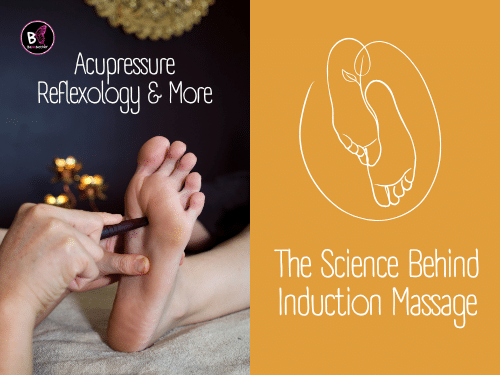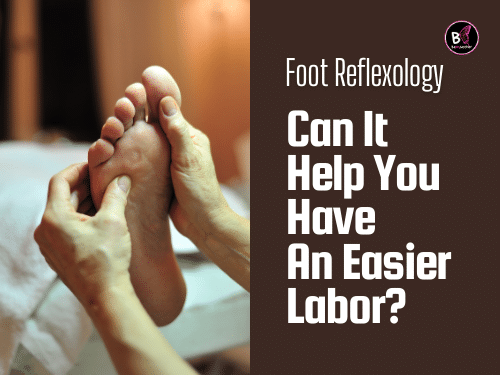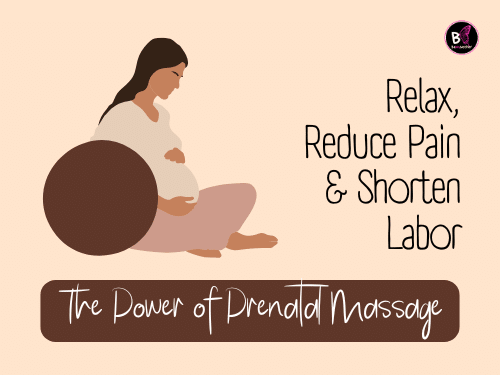As the due date approaches, many expectant mothers look for natural ways to encourage labor. Pregnancy induction massage is a popular technique believed to stimulate contractions and help the body prepare for delivery. But how does it work? Is it safe? And does it help bring on labor? This guide explores the science, benefits, and best practices surrounding pregnancy induction massage to help you make an informed decision.
1. What Is Pregnancy Induction Massage?
Pregnancy induction massage is a specialized form of prenatal massage that aims to naturally encourage labor. Practitioners use acupressure, reflexology, and deep relaxation techniques to stimulate specific pressure points that are believed to promote uterine contractions.
Historical and Cultural Background:
- Traditional Chinese Medicine (TCM): Acupressure and acupuncture have been used centuries to prepare the body for childbirth.
- Ayurveda: Indian prenatal care includes massage and herbal treatments to balance the body and ease labor.
- Western Midwifery: Many midwives use massage techniques as part of natural labor induction methods.
💡 Related Article: Experiencing discomfort as your pregnancy progresses? Learn how to support your body and reduce strain with How to Wear a Pregnancy Belt: 8 Exquisite Tips for Comfort—a must-read for expectant moms seeking relief.
2. How Does Pregnancy Induction Massage Work?

The massage focuses on stimulating specific pressure points linked to labor. Some of the common techniques include:
- Acupressure: Applying firm but gentle pressure to points known to trigger contractions.
- Reflexology: Massaging the feet and hands to promote relaxation and balance.
- Abdominal and Lower Back Massage: Stimulating uterine circulation while relieving tension.
Targeted Areas:
| Massage Area | Purpose |
| Ankles (SP6) | Stimulates uterine activity |
| Hands (LI4) | Encourages contractions |
| Lower Back | Reduces tension and aids baby positioning |
| Feet (BL60) | Helps with relaxation and labor readiness |
💡 Related Article: Wondering how pregnancy affects your body in unexpected ways? Discover the truth behind foot growth and other surprising changes in Do Feet Grow During Pregnancy? 10 Shocking Facts That Bust Common Myths to stay informed.
3. Benefits of Pregnancy Induction Massage
This type of massage offers several benefits beyond potentially inducing labor:
- Reduces stress and anxiety, helping the body enter a more relaxed state.
- It eases lower back pain and hip discomfort, common in late pregnancy.
- Improves circulation, ensuring better oxygen flow to both mother and baby.
- Encourages the release of oxytocin, the hormone responsible for triggering contractions.
🔍 Research Insight: A study published in the Journal of Perinatal Education found that women who received prenatal massage reported less anxiety, depression, and pain. Their labors were also, on average, three hours shorter, with a lower need for pain medication.
Source: PMC
4. Is Pregnancy Induction Massage Safe?
Pregnancy induction massage is generally considered safe for full-term pregnancies (37+ weeks) when performed by a trained professional. However, it should only be done when the body naturally prepares for labor to avoid premature contractions. The massage focuses on relaxation and stimulating key pressure points, but it is not a guaranteed method of labor induction.
When to Avoid Induction Massage:
- If you have placenta previa, preeclampsia, or other high-risk conditions.
- If your healthcare provider has advised against any labor induction methods.
- If you are under 37 weeks pregnant.
🔍 Research Insight: A qualitative study in the International Journal of Therapeutic Massage & Bodywork explored women’s perceptions of prenatal massage safety. While most found it beneficial, healthcare guidance was crucial for reassurance.
Source: NCBI
5. Acupressure Points for Inducing Labor
INDUCE LABOR or SPEED UP LABOR with ACUPRESSURE + Relieving Pain During Labor NATURALLY
Acupressure is a key component of pregnancy induction massage. Here are the most common pressure points:
| Acupressure Point | Location | Believed Effect |
| Spleen 6 (SP6) | Inner ankle, four fingers above the bone | Stimulates uterine contractions |
| Large Intestine 4 (LI4) | Between thumb and index finger | Encourages contractions |
| Bladder 60 (BL60) | Behind the ankle near Achilles tendon | Helps with relaxation and labor |
🔍 Research Insight: A Cochrane Review found that acupressure may help relieve pain during labor, though more research is needed to confirm its effects on induction.
Source: Wikipedia
6. How to Prepare for a Pregnancy Induction Massage
Proper preparation can enhance the effectiveness of a pregnancy induction massage and make the experience more relaxing. Staying hydrated is crucial, as dehydration can slow down labor progression. Wear loose, comfortable clothing that provides easy access to key pressure points. Before your session, practice deep breathing exercises to promote relaxation and help your body respond better to the massage.
Additional Preparation Tips:
- Eat a light meal beforehand to maintain energy levels.
- Create a calm environment with soft lighting or soothing music.
- Keep a positive mindset, as stress or anxiety may hinder labor readiness.
A positive mindset is also key—being calm and open to the process can enhance its effectiveness.
💡 Related Article: Proper preparation can enhance the effectiveness of a pregnancy induction massage and make the experience more relaxing. Staying hydrated is crucial, as dehydration can slow down labor progression. Learn whether Is Liquid IV Safe During Pregnancy? Unveil 8 Key Facts for a Stronger Pregnancy to ensure you give your body the support it needs.
7. How Long Does a Pregnancy Induction Massage Take to Work?

There’s no fixed timeline for when or if a pregnancy induction massage will work. Several factors influence its effectiveness, including:
- Gestational age (It’s more effective closer to 40 weeks).
- Baby’s position (If the baby is high in the pelvis, induction methods may take longer).
- Maternal health and stress levels.
🔍 Research Insight: A study in Scientific Reports found that foot reflexology massage significantly reduced labor pain and anxiety, shortened labor, and stabilized vital signs in pregnant women. However, results varied among individuals.
Source: Nature.com
8. Exercises and Stretches to Complement Pregnancy Induction Massage
Pairing pregnancy induction massage with gentle movement can further prepare the body for labor. Certain exercises help promote pelvic flexibility, reduce tension, and encourage the baby’s descent into the birth canal.
Recommended Exercises:
- Squats: Open the pelvis and strengthen the lower body for labor.
- Pelvic Tilts: Relieve lower back pressure and improve spinal alignment.
- Walking: Uses gravity to encourage baby positioning naturally.
Engaging in these exercises alongside massage may help increase oxytocin levels, stimulating contractions and supporting a smoother labor process. Always consult your healthcare provider before starting any new physical activity.
💡 Related Article: Concerned about dental care while expecting? Get expert-backed advice on ensuring safe treatment in Can You Have a Root Canal During Pregnancy? 8 Expert Tips for Safe Dental Care and keep your oral health in check.
9. What to Avoid Before and After a Pregnancy Induction Massage
Certain activities and foods may counteract the effects of induction massage. Avoid:
- Heavy meals before your session.
- Strenuous workouts right after the massage.
- Dehydration—drink water to keep muscles relaxed.
After your massage, take a warm bath or a short walk to help encourage contractions.
💡 Related Article: Curious about post-pregnancy transformations and recovery options? Explore expert-backed insights on reshaping your body safely in Why Is Tummy Tuck Good for Post Pregnancy? 9 Life-Changing Expert-Backed Insights and learn how to navigate the journey after childbirth.
10. Do Pregnancy Induction Massages Really Work?

The effectiveness of pregnancy induction massage is still being researched. While many women report positive results, scientific studies on its impact remain limited.
🔍 Research Insight: A systematic review of 43 studies on acupressure found mixed results, with many studies showing positive effects but also potential bias. More high-quality research is needed to confirm its effectiveness.
Source: Wikipedia
FAQ Section: Addressing Common Concerns
- Is pregnancy induction massage scientifically proven to induce labor?
There is limited scientific evidence, but many women report that induction massage helped them go into labor naturally. It primarily promotes relaxation, which can support the labor process. - Where should I massage to induce labor?
Key acupressure points include Spleen 6 (SP6), Large Intestine 4 (LI4), and Bladder 60 (BL60). - Is induction massage painful?
No, it should not be painful. Some acupressure points may feel tender, but the massage should be gentle and soothing. - How can I make my cervix open faster?
Along with induction massage, activities like walking, squatting, and staying hydrated can help. Some foods, such as dates and pineapple, are also believed to support cervical ripening. - How long does an induction massage take to work?
Results vary. Some women may feel contractions within hours, while others may not experience changes. The body must already be ready for labor for the massage to be effective.
Conclusion
Pregnancy induction massage is a natural method that may help prepare the body for labor. While research on its effectiveness is ongoing, many women find it beneficial for reducing stress, relieving pain, and promoting relaxation—all of which can support the labor process. If you’re considering an induction massage, consult your healthcare provider to ensure it’s the right choice. Whether or not it triggers labor, it’s a fantastic way to relax and celebrate the final weeks of pregnancy.



